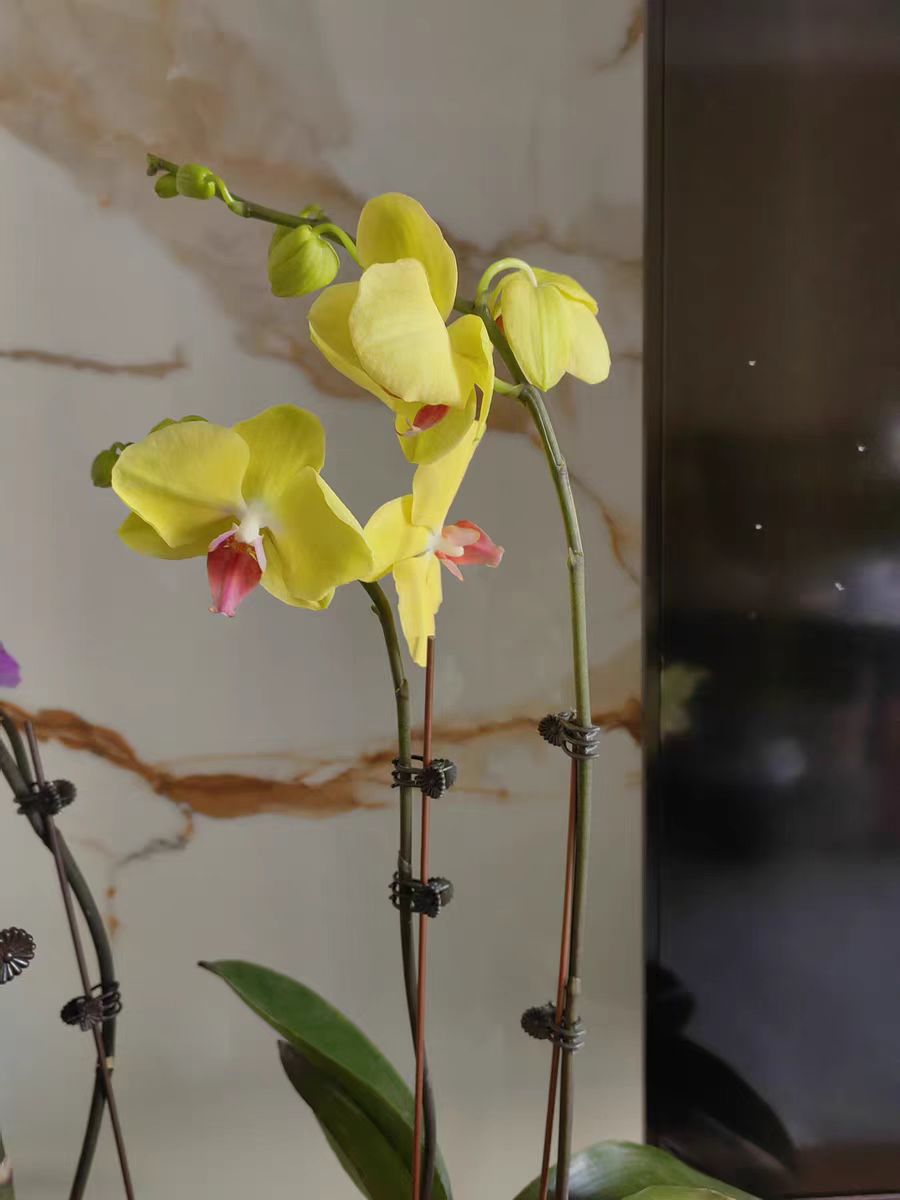As a representative of tropical epiphytic orchids, Phalaenopsis has become a popular choice for indoor ornamental flowers due to its delicate petals resembling butterfly wings. This high-end indoor potted plant has particularly sensitive water requirements during cultivation, especially in the flowering stage. Will Phalaenopsis flowers wilt when lacking water? What obvious symptoms will appear if they are short of water during flowering? Understanding these issues can help us timely capture the plant's "distress signals" and avoid shortened flowering periods or plant damage due to negligence.
Water deficiency in Phalaenopsis will inevitably cause the flowers to wilt. Unlike most flowers, Phalaenopsis has a unique aerial root system. These roots exposed to the air not only absorb nutrients and water but also perform photosynthesis. Under normal conditions, healthy and plump roots appear bright green, providing sufficient water support for the flowers. However, when the environment is short of water, the plant prioritizes supplying stored water to the core parts for vital activities. As non-essential survival organs, the flowers will first show a weak state due to water loss. At the same time, water deficiency can also lead to hormonal imbalance in the plant, inhibiting cell turgor pressure, causing the petals to lose their plump shape, gradually lose luster, and start to droop.
During the flowering period, Phalaenopsis will release "alarms" through multiple parts when lacking water. Flowers are the most intuitive signal transmitters. In the early stage of water deficiency, slight wrinkles will appear on the edges of the petals, like crumpled silk. As the water deficiency intensifies, the petals will gradually dry out from the edges to the center, their color will fade from bright to dull, and even brown spots will appear. If water is still not replenished at this point, the flowers will wither rapidly, shortening the ornamental period that could originally last for months.
Leaves are also an important indicator for judging water deficiency. Healthy Phalaenopsis leaves are thick and elastic, with a moist luster on the surface. When short of water, the leaves will become thinner and softer due to water loss, losing their firmness when touched. In severe cases, the leaves will curl downward, and the tips will gradually turn yellow and dry out. This is because water deficiency causes cells to fail to maintain normal turgor pressure, and the leaves change shape to reduce water evaporation.
Aerial roots serve as hidden "barometers." Under normal moist conditions, the surface of aerial roots is bright green with a transparent water film. When lacking water, the roots quickly turn grayish-white or light green, become dry and fragile in texture, and may even shrink in severe cases. Once these air-exposed roots are damaged, the plant's ability to absorb water and nutrients will significantly decline, thereby affecting its overall health and flowering performance.
It is worth noting that Phalaenopsis' water requirements are not static. During the flowering period, although the plant's water demand increases, its roots are extremely sensitive to waterlogging, so the watering principle of "water when the soil is dry and stop when it is moist" is particularly important. When determining whether water is needed, in addition to observing the plant's symptoms mentioned above, you can also touch the substrate (such as moss or sphagnum) or use a bamboo stick to detect the dryness level by inserting it into the substrate. The optimal time to water is when the surface of the substrate is dry and the substrate brought out by the bamboo stick is in a semi-dry state.
Phalaenopsis is a water-loving plant but intolerant of waterlogging, with particularly sensitive water requirements during flowering management. Therefore, timely observation and water replenishment are crucial for maintaining the quality of Phalaenopsis' flowering period and extending its ornamental period. By observing the leaves, potting soil and roots, flowers, and other symptoms, we can accurately determine whether Phalaenopsis is short of water and take appropriate water-replenishing measures.
Will Phalaenopsis flowers wilt when short of water?

Share with
Tagged in :




Leave a Reply